Abstract
In a comparison of home and sanatorium treatment for tuberculous patients in India, pretreatment cultures of tubercle bacilli showed a higher average level of resistance to p-aminosalicyclic acid (PAS) than pretreatment cultures from a representative sample of patients in Great Britain. The investigation described in the present paper was therefore undertaken to find out the nature of the difference in the PAS sensitivity of cultures from Indian and British patients. In this investigation, carried out jointly at the Tuberculosis Chemotherapy Centre, Madras, and the Postgraduate Medical School of London, sputum specimens from 147 Indian and 93 British patients were cultured and subjected to sensitivity tests. The tests were set up on slopes containing various concentrations of PAS and inoculated with 105 viable units of the cultures, and the minimal concentrations of PAS inhibiting the growth of 20, 50 and 100 colonies were determined. According to the 20-colony end-point—the one commonly used in routine sensitivity tests—the Indian strains were significantly more resistant than the British strains. This difference in sensitivity was not apparent, however, in either the 50-colony or the 100-colony results. The presence of a small proportion of resistant organisms was found to be a general characteristic of the Indian strains, but did not appear to be related to any special tendency for the patient to fail to respond to treatment with PAS. Since a chance increase in the inoculum size might well affect the 20-colony results, the authors recommend a tenfold decrease in the size of the inoculum used in routine PAS-sensitivity tests on Indian patients.
Full text
PDF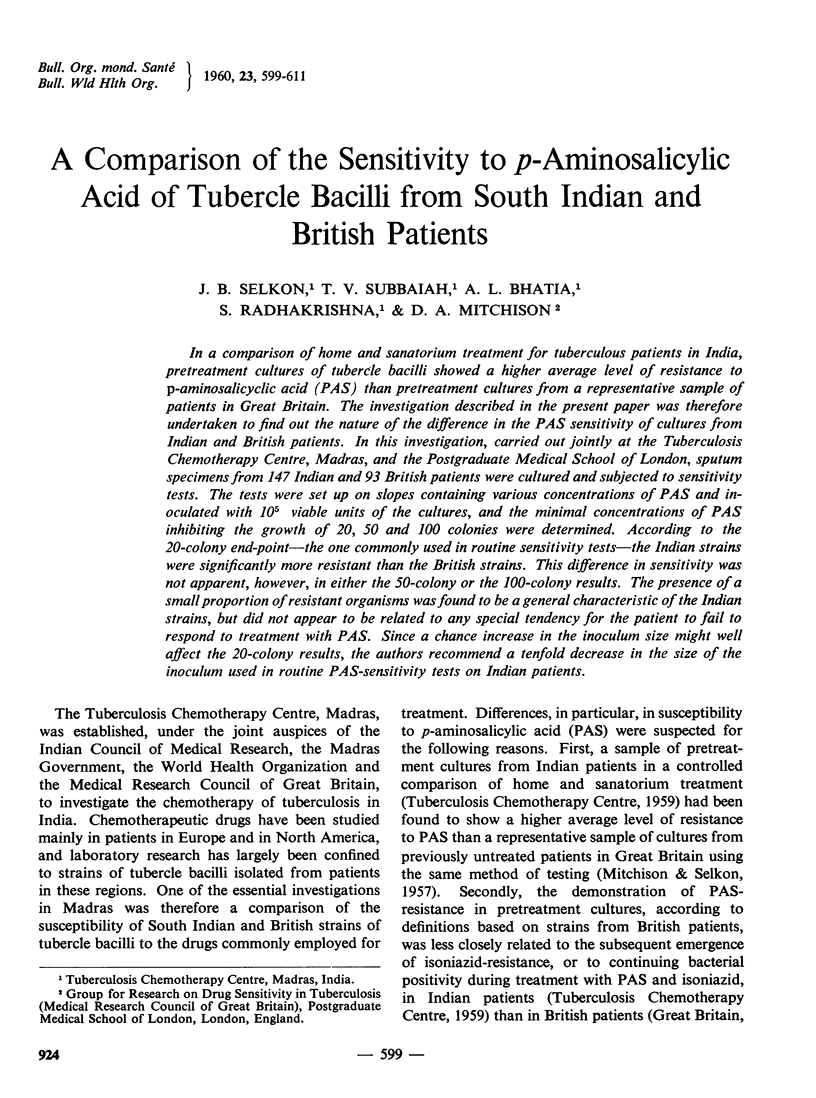
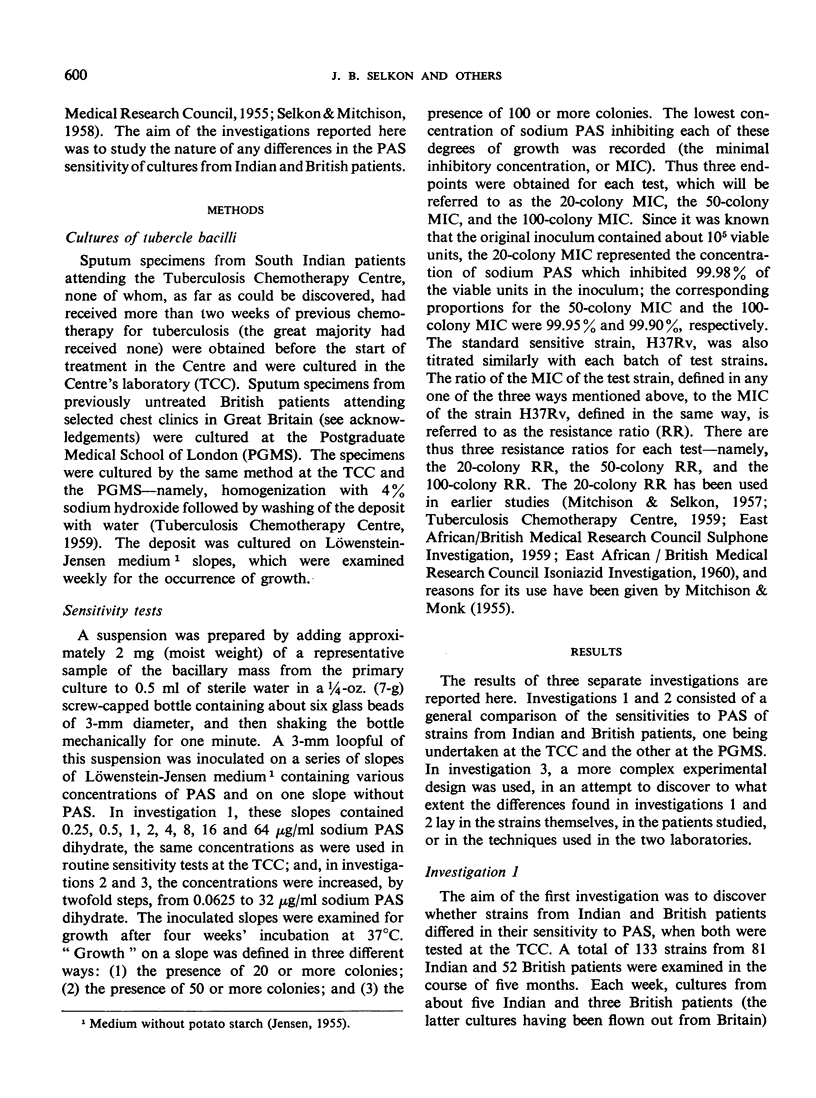
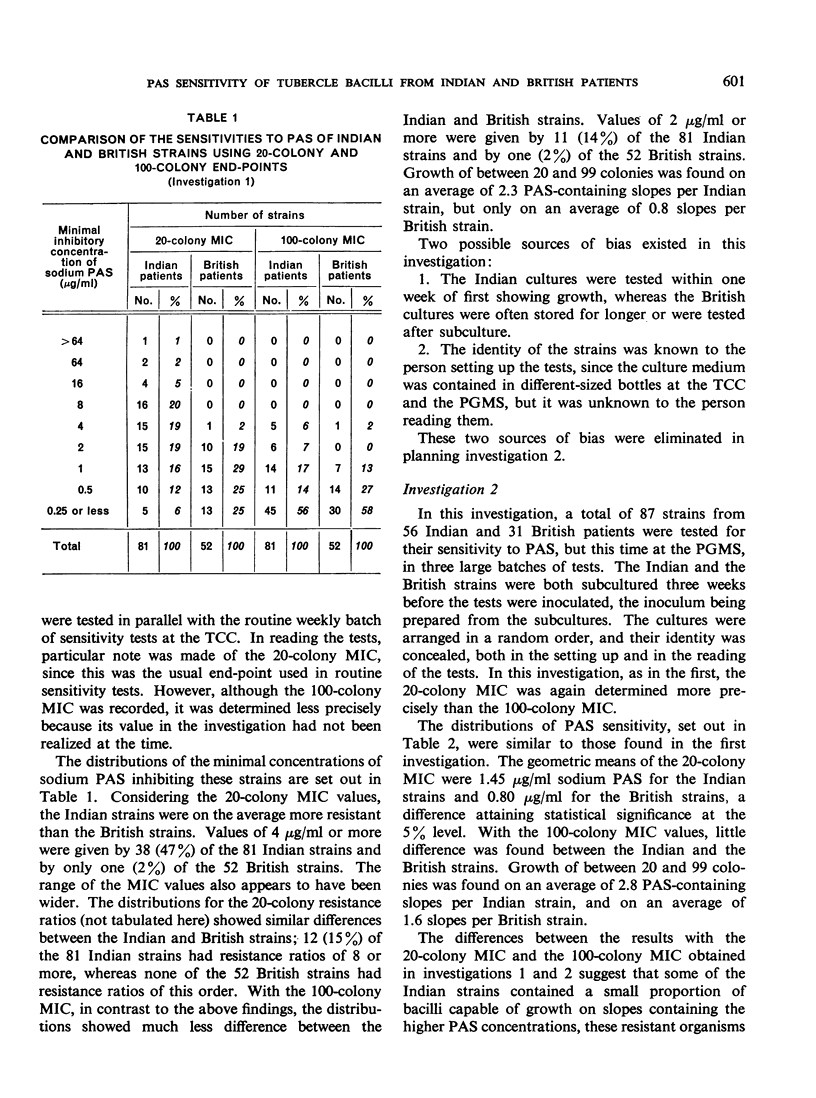
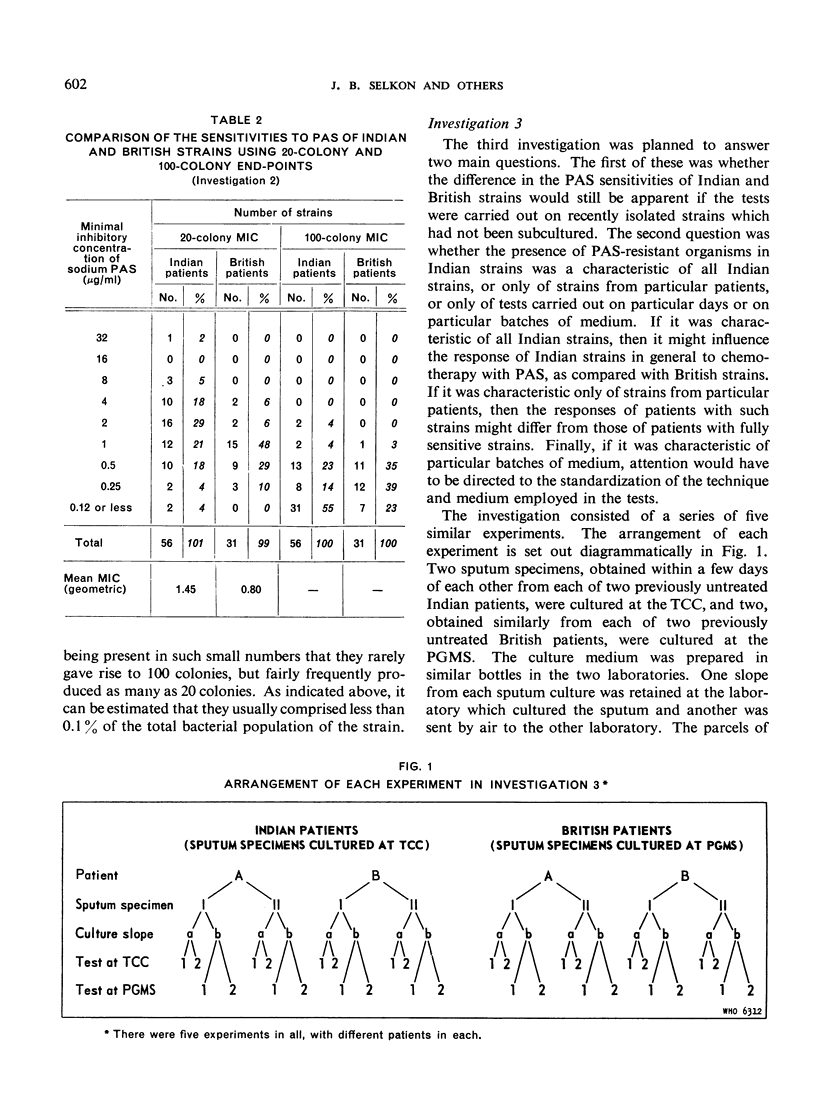
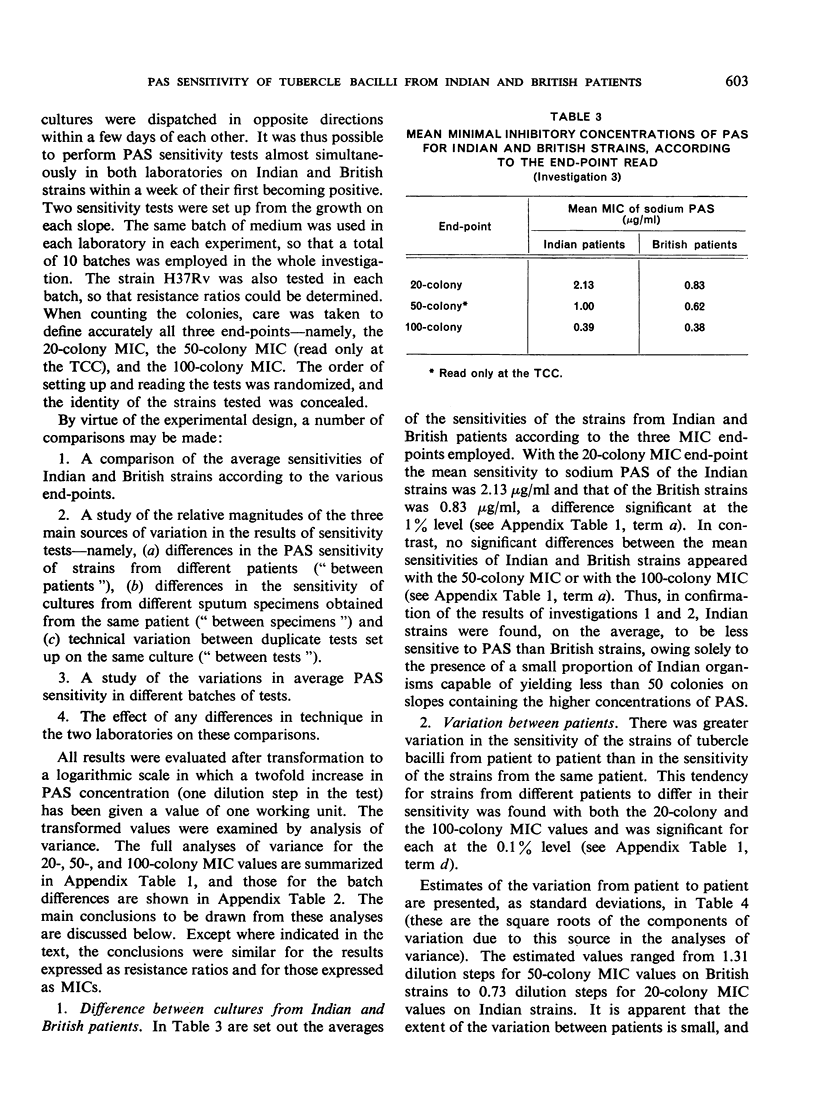
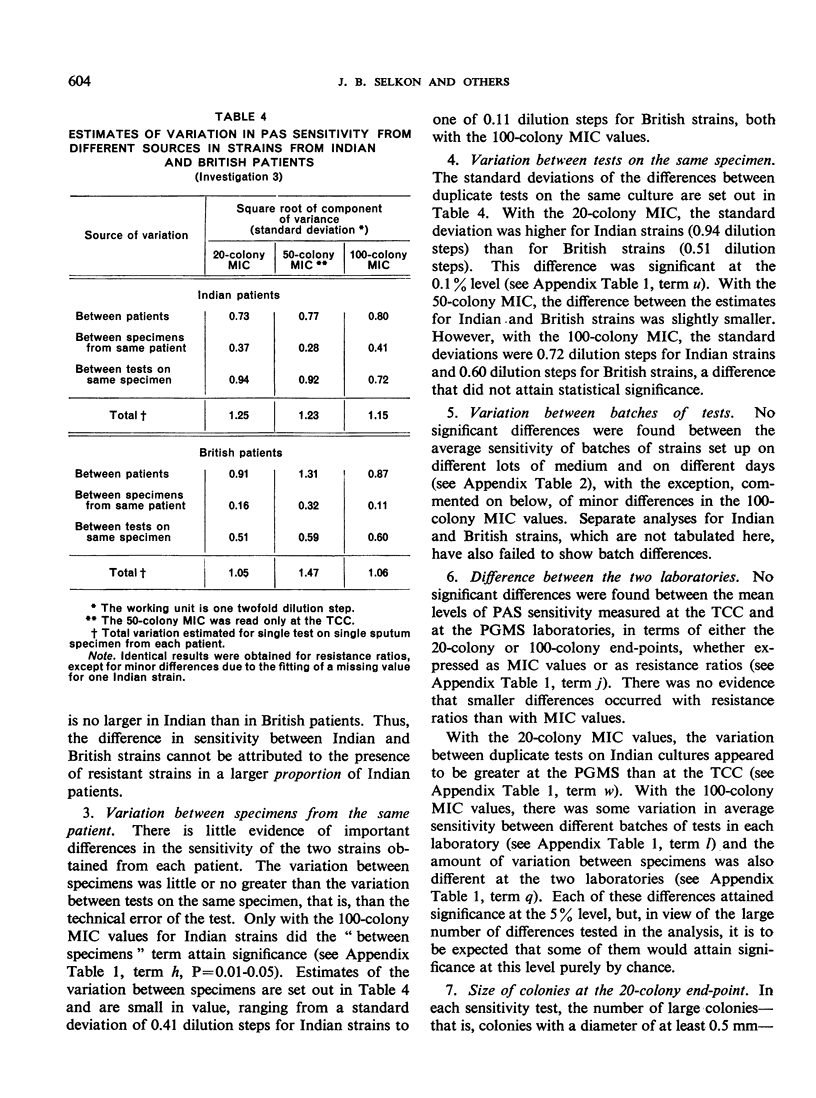
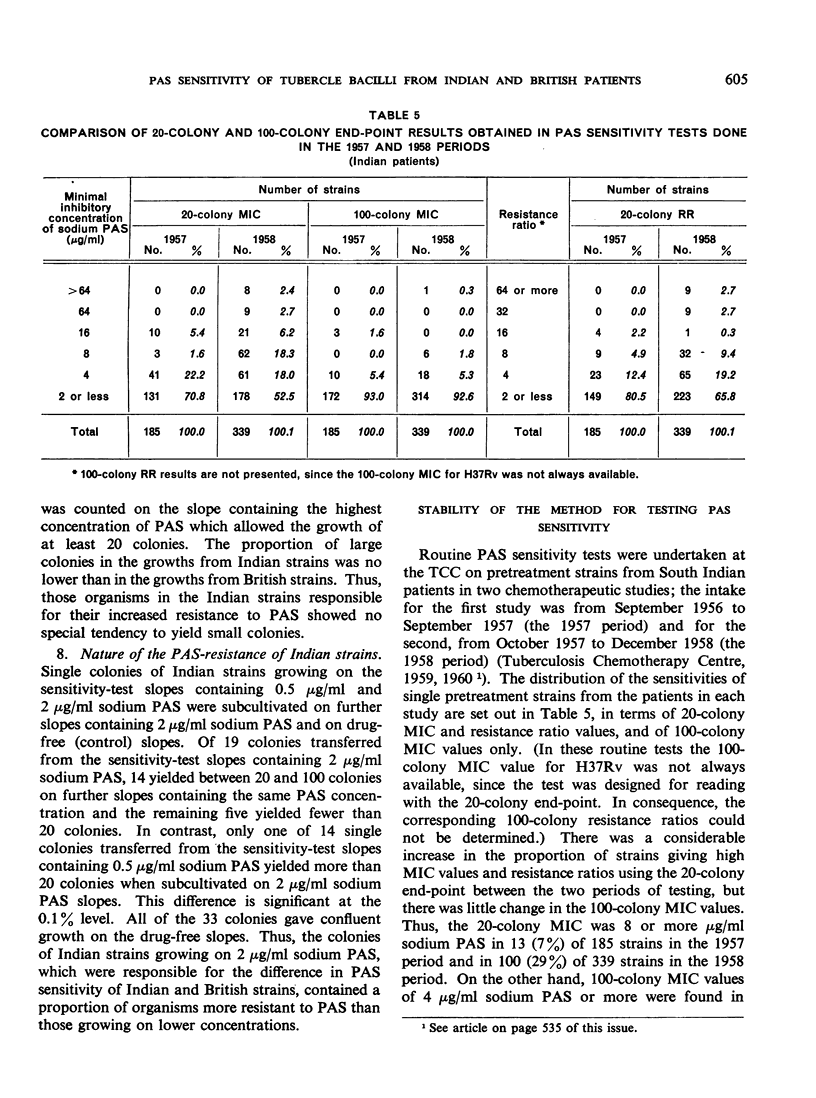
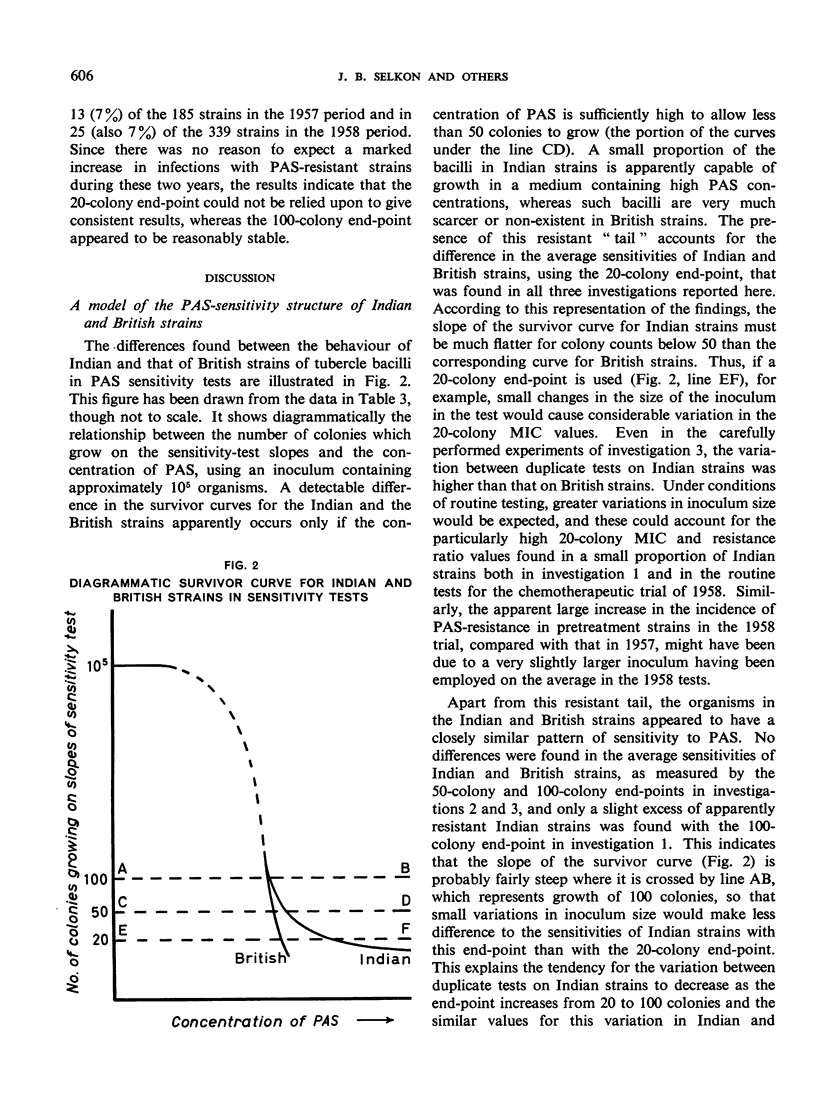
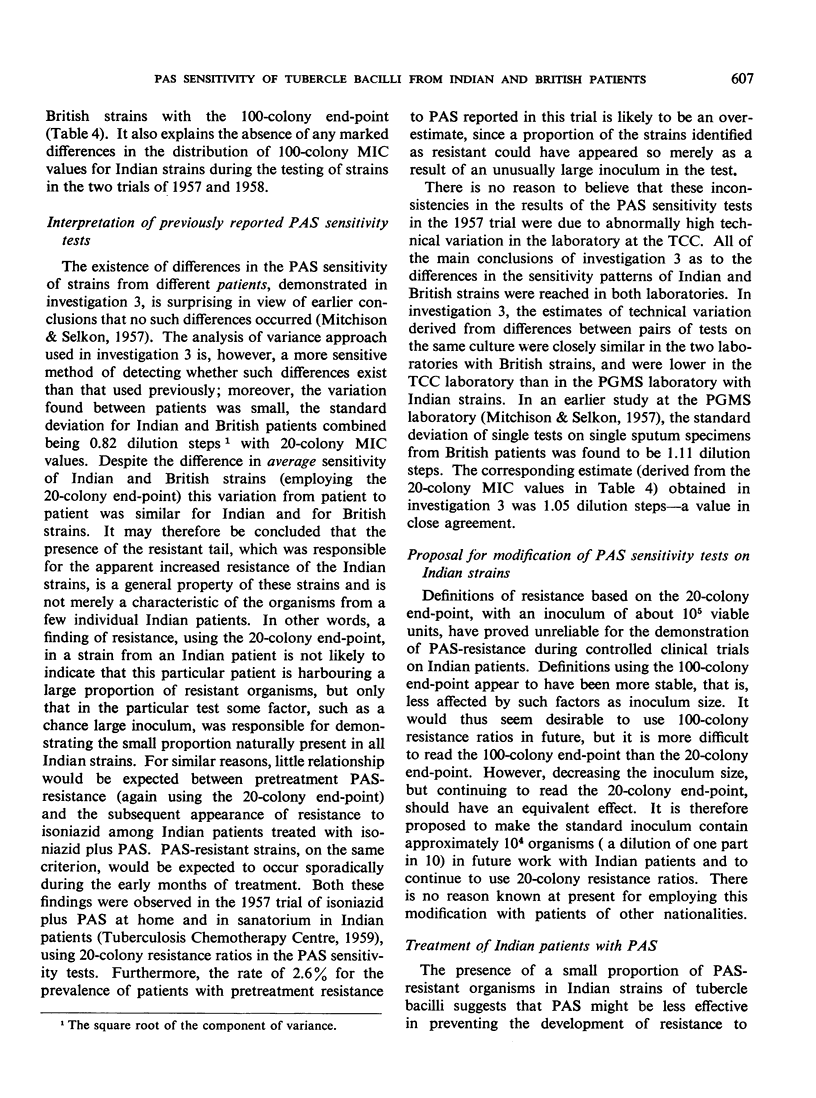
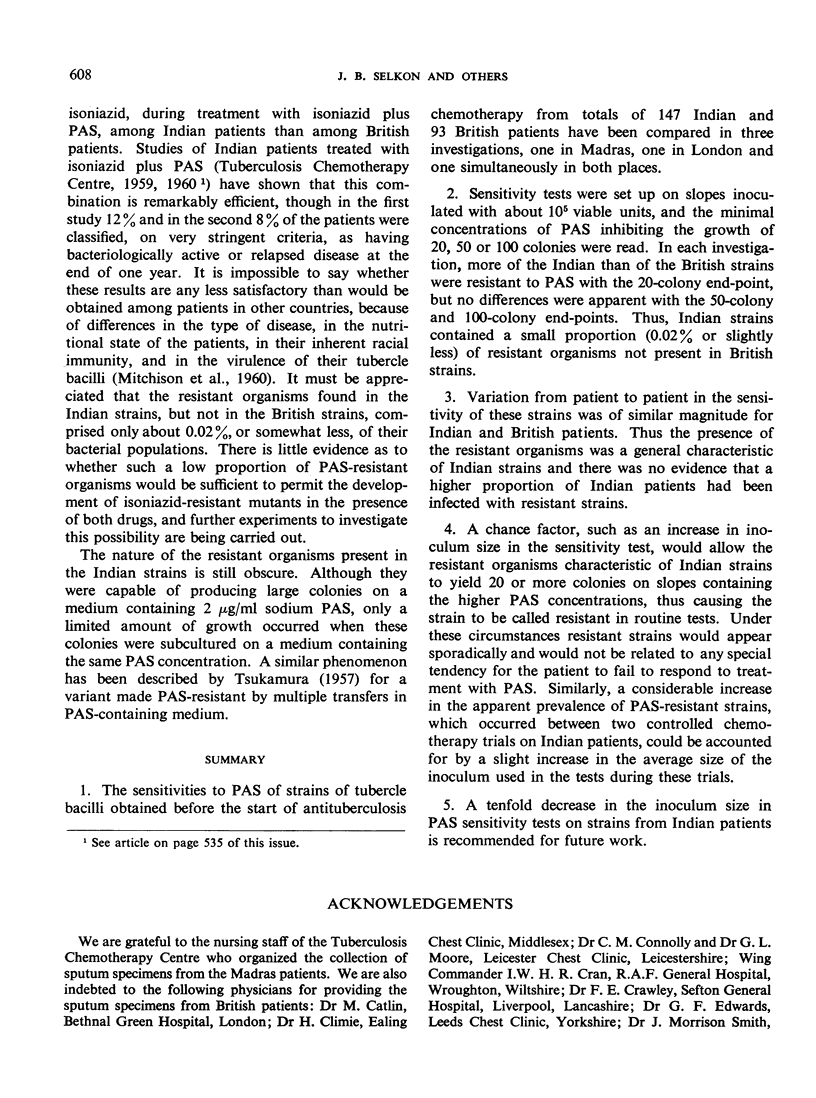
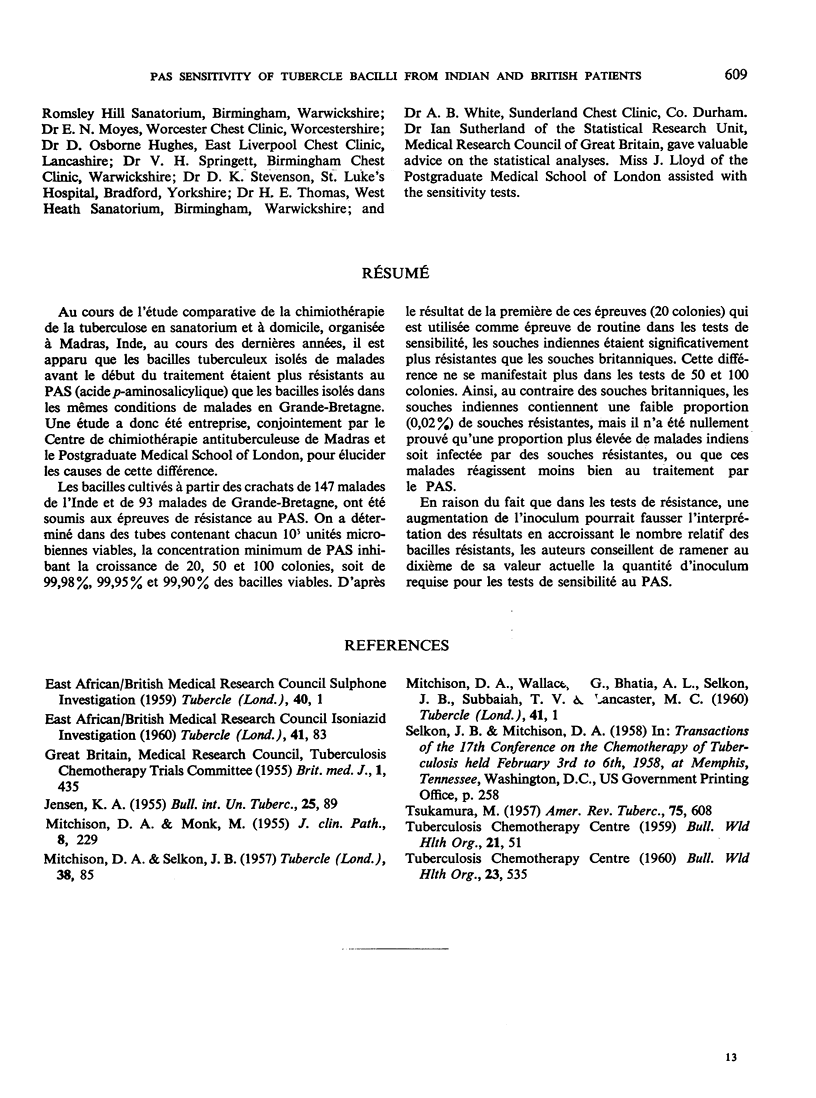
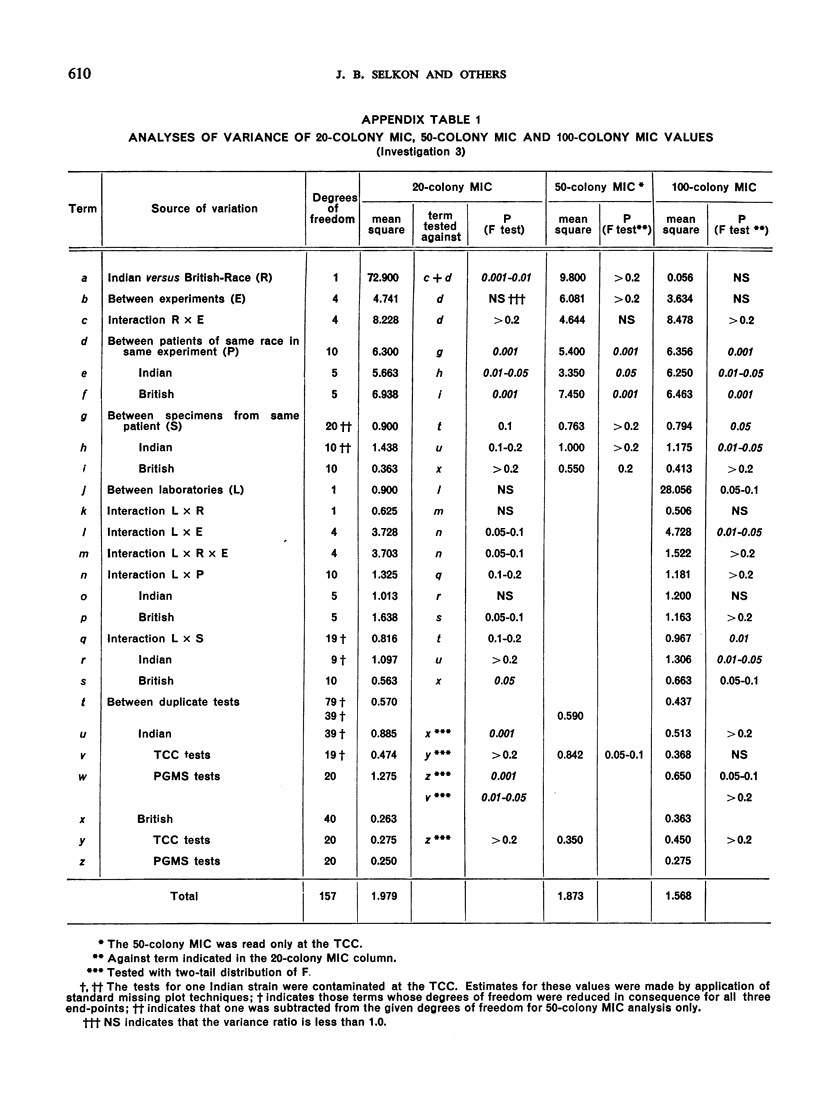
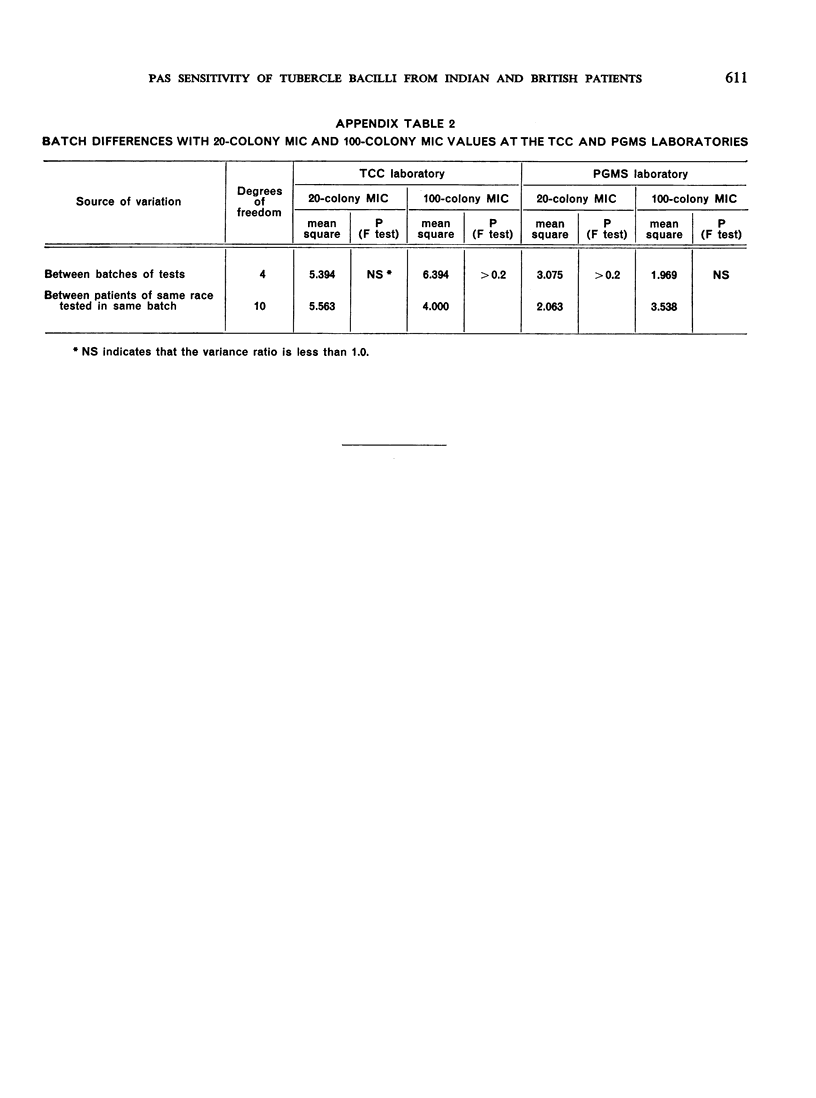
Selected References
These references are in PubMed. This may not be the complete list of references from this article.
- Jacobs W. A., Heidelberger M., Bull C. G. THE BACTERICIDAL PROPERTIES OF THE QUATERNARY SALTS OF HEXAMETHYLENETETRAMINE : III. THE RELATION BETWEEN CONSTITUTION AND BACTERICIDAL ACTION IN THE QUATERNARY SALTS OBTAINED FROM HALOGENACETYL COMPOUNDS. J Exp Med. 1916 May 1;23(5):577–599. doi: 10.1084/jem.23.5.577. [DOI] [PMC free article] [PubMed] [Google Scholar]
- MITCHISON D. A., MONK M. Comparison of solid and liquid medium sensitivity tests of tubercle bacilli to para-aminosalicylic acid. J Clin Pathol. 1955 Aug;8(3):229–236. doi: 10.1136/jcp.8.3.229. [DOI] [PMC free article] [PubMed] [Google Scholar]
- MITCHISON D. A., SELKON J. B. Bacteriological aspects of a survey of the incidence of drug-resistant tubercle bacilli among untreated patients. Tubercle. 1957 Apr;38(2):85–98. doi: 10.1016/s0041-3879(57)80002-6. [DOI] [PubMed] [Google Scholar]
- TSUKAMURA M. The properties of para-aminosalicylic acid-resistant Mycobacterium tuberculosis var. hominis. Am Rev Tuberc. 1957 Apr;75(4):608–617. doi: 10.1164/artpd.1957.75.4.608. [DOI] [PubMed] [Google Scholar]


